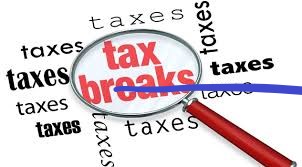Gifts to customers
When you make gifts to customers, the gifts are deductible up to $25 per recipient per year. For purposes of the $25 limit, you need not include “incidental” costs that don’t substantially add to the gift’s value, such as engraving, gift-wrapping, packaging or shipping. Also excluded from the $25 limit is branded marketing collateral — such as pens or stress balls imprinted with your company’s name and logo — provided they’re widely distributed and cost less than $4.
The $25 limit is for gifts to individuals. There’s no set limit on gifts to a company (a gift basket for all to share, for example) as long as they’re “reasonable.”
Gifts to employees
Generally, anything of value that you transfer to an employee is included in the employee’s taxable income (and, therefore, subject to income and payroll taxes) and deductible by you. But there’s an exception for noncash gifts that constitute “de minimis fringe benefits.”
These are items so small in value and given so infrequently that it would be administratively impracticable to account for them. Common examples include holiday turkeys or hams, gift baskets, occasional sports or theater tickets (but not season tickets), and other low-cost merchandise.
De minimis fringe benefits are not included in an employee’s taxable income yet are still deductible by you. Unlike gifts to customers, there’s no specific dollar threshold for de minimis gifts. However, many businesses use an informal cutoff of $75.
Keep in mind that cash gifts — as well as cash equivalents, such as gift cards — are included in an employee’s income and subject to payroll tax withholding regardless of how small and infrequent.
Holiday parties
The Tax Cuts and Jobs Act reduced certain deductions for business-related meals and eliminated the deduction for business entertainment altogether. There’s an exception, however, for certain recreational activities, including holiday parties.
Holiday parties are fully deductible (and excludable from recipients’ income) provided they’re primarily for the benefit of non-highly-compensated employees and their families. If customers also attend, holiday parties may be partially deductible.
If you’re thinking about giving holiday gifts to employees or customers or throwing a holiday party, contact us. With a little tax planning, you may receive a gift of your own from Uncle Sam.

